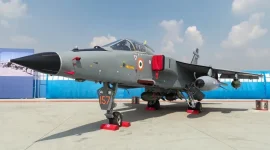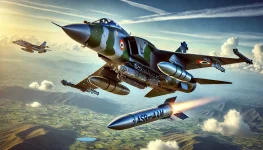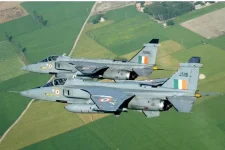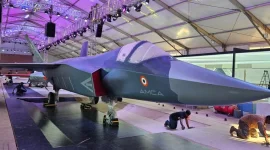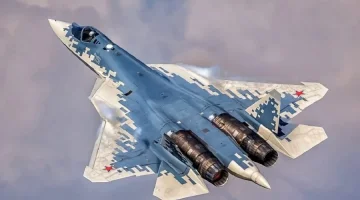- Views: 3K
- Replies: 16
The Indian Air Force's (IAF) Jaguar Darin-III strike aircraft are set to continue their service well beyond 2035, according to confirmation from Hindustan Aeronautics Limited (HAL).
This extended operational life is the result of a comprehensive life extension program coupled with significant technological enhancements, most notably the integration of advanced radar and missile systems.
The incorporation of the ELM-2052 Active Electronically Scanned Array (AESA) Fire Control Radar and the Advanced Short Range Air-to-Air Missile (ASRAAM) has substantially boosted the combat effectiveness of these aircraft, ensuring they remain a relevant asset for at least another decade.
The Jaguar, an aircraft renowned for its deep-penetration strike capabilities, has been a vital component of the IAF’s arsenal since its induction in the late 1970s.
Originally an Anglo-French design, the aircraft has undergone several upgrades in India. The latest Darin-III upgrade, executed by HAL, significantly modernises the aircraft’s avionics, radar systems, and weapon-carrying capacity.
These improvements enable the Jaguar Darin-III to execute precision strikes, engage in air superiority missions, and perform reconnaissance tasks with greater accuracy and efficiency.
The state-of-the-art ELM-2052 AESA radar provides enhanced capabilities in detecting and tracking multiple targets simultaneously, even in contested environments.
Furthermore, the addition of the ASRAAM missile system improves the aircraft’s ability to engage hostile aircraft, making the Darin-III a potent platform in contemporary aerial combat scenarios.
In line with its fleet modernisation plans, the Indian Air Force reportedly intends to begin phasing out the older, less capable Jaguar Darin-I and Darin-II variants from 2028-2029.
These earlier versions, which have not received the comprehensive upgrades of the Darin-III, are approaching the end of their serviceability. The retirement of these older aircraft will help streamline the IAF’s operational inventory, allowing a greater focus on technologically advanced platforms like the upgraded Darin-III to maintain a high state of combat preparedness.
The decision to extend the life of the Jaguar Darin-III through advanced upgrades reflects the IAF's broader strategy of optimising the utility of its existing military assets while progressively inducting newer aircraft, such as the indigenous Tejas Mk1A and other future acquisitions.
Hindustan Aeronautics Limited's pivotal role in upgrading and sustaining the Jaguar fleet highlights the public sector undertaking's expertise in maintaining legacy aircraft.
This effort also strongly supports India’s national objective of achieving self-reliance in defence manufacturing, a key goal of the Atmanirbhar Bharat initiative.

